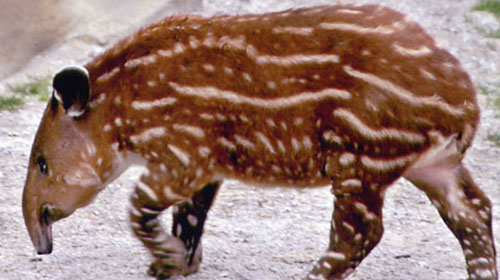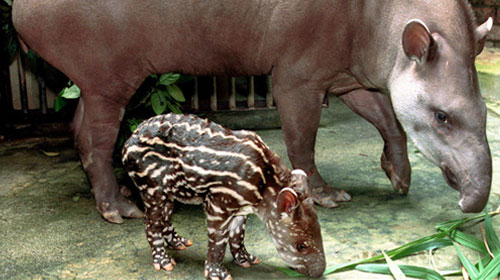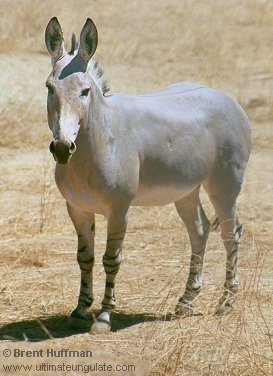Baird’s tapir
Baird’s tapir makes its home in Central and South America and is actually the largest indigenous mammal in Central America. This unique mammal shares common ancestors with horses and rhinos but resembles the ancestors more than today’s hippos and horses. Baird’s tapir is currently classed as endangered due to threat from hunters and habitat loss, these issues coupled with the slow reproduction rate of the tapir is leading to a decline in the population that needs addressing.

A young Baird's tapir
There is now believed to be less than 5000 surviving Baird’s tapir in the wild stretching through Mexico, Costa Rica, Panama, Ecuador and Colombia. Unfortunately some localized groups of Baird’s tapir have already become completely extinct such as the population that used to reside in El Salvador.
Although much of the land inhabited by the tapir is generally the same the tapir can actually thrive in a variety of different habitats including marshes, woodlands, tropical forests and grassland. As long as there is a decent water supply then the tapir can be found in any one of these habitats and would be an incredibly common sight if it wasn’t for low population numbers.
When the tapir are young they boast a coat of rich brown with whites stripes or dots which works to camouflage these youngsters however as they grow into adults the coast becomes much darker. Tapirs can be instantly recognized by their pronounced snout that resembles an elephants trunk but much shorter. Heavy set and with a good center of gravity the tapir can move through the undergrowth with skill and is similar in speed to that of a wild boar. The tapir also has four toes, three of which are splayed to provide extra mobility on softer surfaces such as marshes.

A young Baird's tapir with its mother
Although tapirs are seldom seen they can be active during both daytime and throughout the night, however tapirs are most likely to take cover in the dense bush or underwater in the presence of any humans or predators. The diet of Baird’s tapir is made up of plant products such as leaves, seeds and twigs of which the tapir will consume a vast amount each day. Though the tapirs may shy away from other animals they are though to live in family groups with predefined territory. There is no strict breeding season when it comes to tapir with females giving birth at different periods in the year. After successful mating the female tapir will gestate for around 13 months before giving birth to 1 or 2 offspring which have been known to stay will their mothers for up to 2 years.



well well well..
i think these guys … the BAIRD TAPIR
would not be endangered if those stupis people or whatever are always hurting them.. then they would be ok. but they aint because stupid people out there hurting some people..
but iguess icant do anything about it..
wish icould.. iwould sooooo DO something about it.
iwanna help those poor animals..
ITS SAD !!! and SICK!!!!!!!!